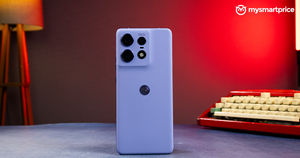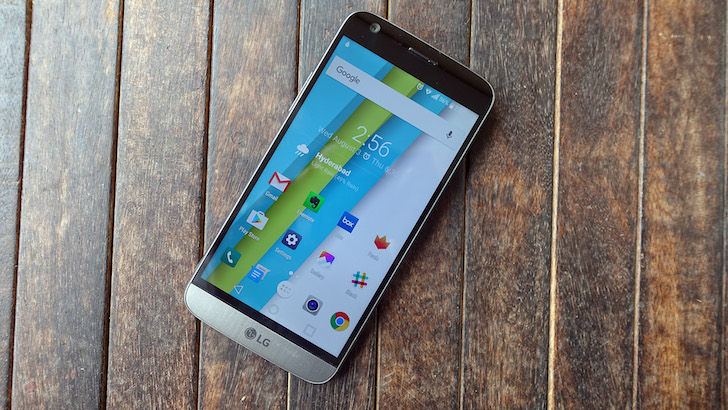
LG has to be the only mainstream handset manufacturer that embraces change wholeheartedly. That has reflected in its G series of phones over the last few years. With the LG G2, the vendor decided to switch the buttons to the back of the phone. The G3 refined that design, introducing a Q-HD screen. For the G4, the brand went with a curvier design with a leather back. However, there have been a few missteps along the way: LG’s attempts to make a flexible phone with the Flex and Flex 2 failed to pay dividends, and the timing of the V10 meant that a decent phone was outdone by an even better one in the Galaxy Note 5.
LG G5
What Is Good?
- Good display
- Excellent camera
- Clean UI
- Fast performance
- Fast fingerprint scanner
What Is Bad?
- Modularity is a mess
- Battery life is average
- Too costly
Onward to 2016, and we have the LG G5 and its modular accessories. Does the South Korean manufacturer have what it takes to go head-to-head against the Galaxy S7 or the HTC 10? Let’s find out.
LG G5: Design and display
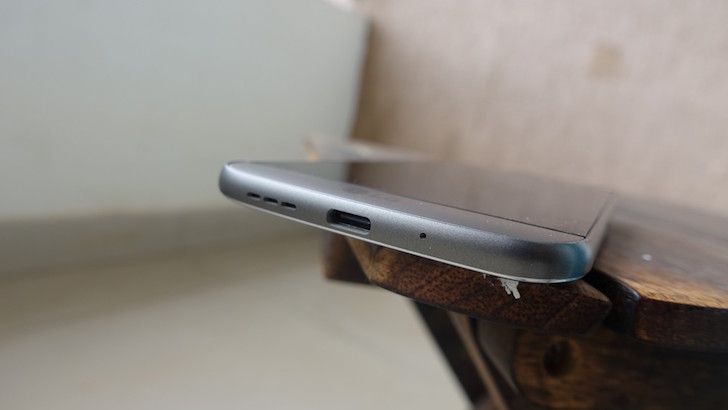
If you like bold designs, the G5 won’t let you down. The metal body coupled with the single sheet of glass at the front and the gently sloping forehead makes for an evocative design (much like Sony’s monolithic Bravia TVs from a few years ago). The metal exterior is coated with a matte finish, and while it makes for a comfortable in-hand feel, it doesn’t necessarily convey the fact that you’re that using a phone that costs upward of Rs.50,000. The primer used to cover the back of the G5 covers the antenna lines, giving the phone a clean look.
LG’s decision to alter the button layout on its flagships is infuriating.
However, LG’s decision to alter the button layout on its flagships is infuriating. Having used the G4 for most of last year, I was constantly pressing the back of the phone to control the volume, only to hit the camera sensor. That’s because LG has shifted the volume rocker to the left side of the phone, while leaving the power button at the back underneath the camera sensor. The move is ill-advised, and it just feels like LG is conducting its A/B tests with its customers. It’s high time the manufacturer picked a variation for its buttons, and went with it instead of changing that configuration every few years.

At the bottom, you’ll find the single speaker, which is sufficiently loud and has a wide soundstage. Next to the speaker is the USB-C charging port. The 3.5mm audio port is located up top, and you have two microphones located at the top and bottom of the phone. Dominating the rear is LG’s new dual camera offering, which includes a 16-megapixel shooter combined with an 8-megapixel camera for wide-angle shots. The power button at the back now houses a fingerprint sensor, which outshines the finicky sensor on the S7 edge. The sensor on the G5 is always active, cutting down the time taken to recognize and authenticate your finger. Overall, it is one of the best sensors I’ve seen on an Android phone to date.
Also Read: Samsung Galaxy S7 Review: New Wine in an Old, Slightly Modified Bottle
To accommodate the modular design, LG went with a slide-out bottom section, which is accessible by pressing a button on the lower left corner. This move has led to several issues with the overall fit and finish of the phone, as the bottom section does not align with the top part of the phone.
Coming to the display, LG continues to offer one of the best screens in this segment. The Quad-HD IPS LCD panel offers excellent color accuracy and viewing angles, and the reduction in size to 5.3 inches from 5.5 inches on the G4 makes for a more comfortable one-handed usage.
LG continues to offer one of the best screens in this segment.
For the first time, LG is offering an always-on mode, which gives you a quick look at the time and date as well as the unread notification icons. Samsung had also taken a similar route with the always-on screen on the Galaxy S7 and S7 edge, but the G5 displays all incoming notifications unlike the select few that you get on Samsung’s phones. Moreover, even though Samsung’s AMOLED screens should theoretically consume less power as they don’t need to switch on the entire display to view incoming messages — unlike the LCD panel on the G5 – I found that the latter was better at idle battery drain with the feature enabled.
There is an issue with the ambient light sensor on the phone. If you leave auto brightness enabled, it tends to reduce brightness significantly, so much so that you won’t be able to see what’s on the screen. I’m okay with the minor niggles because the screen overall is great, and it has a feature that should be standard across Android: double tap to wake the display. With the power button at the back, this is the easiest way to unlock the phone when it’s laid flat on a surface.
LG G5: Modularity
While last year’s G4 was all about leather back covers, this year, LG has decided to go with modularity as the defining feature for the G5. Pressing the button on the left corner lets you slide out the bottom portion of the phone, including the battery. You can then attach modules, which LG is calling Friends, to extend the functionality of the phone. There are two modules: LG CAM Plus, which adds camera controls including a shutter button, zoom, and an additional 1200mAh battery to the phone, and a B&O Hi-Fi module, which as the name suggests brings Hi-Fi 24-bit audio to the phone.
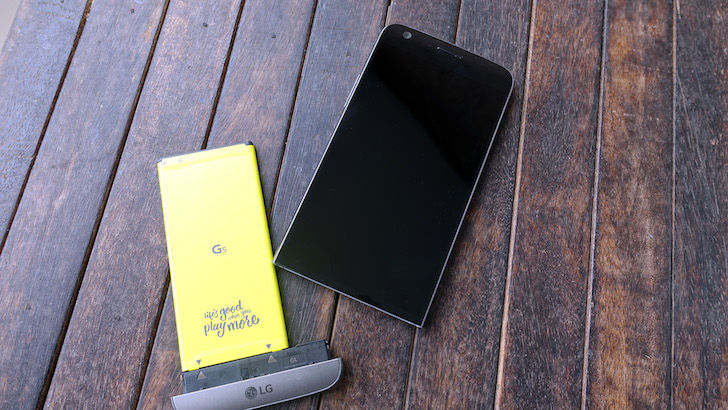
The idea of modular accessories sounds very interesting, but the way LG has gone about the process leaves a lot to be desired. You have to slide out the battery to attach the modules, which means you’ll have to inevitable restart the phone every time you attach or remove a module. Then there’s the process itself, which is by no means refined, as you have to pull out the battery with force, which often leads to worry that you’ll break something inside while doing so. Then there’s the limited functionality of the modules. The CAM Plus is interesting, but I wouldn’t invest Rs.6,000 just for dedicated shutter buttons. The Hi-Fi module serves even less function. If I want to listen to high-fidelity music, I would rather just go for the HTC 10, which offers dedicated DACs built into the phone. Sure, it’s not going to be as great as the 32-bit DAC that’s in the Hi-Fi module, but it more than gets the job done. If I’m spending Rs.45,000 on a phone, I would want a much more elegant solution when it comes to modularity.
What Lenovo has done with MotoMods makes LG’s efforts in this segment look pale.
And such a solution exists. There’s another phone on the horizon that offers similar functionality but is nowhere near as clunky as what LG has achieved. I’m talking about Lenovo’s Moto Z and Moto Z Force, which are set to debut later this year. The differentiating feature with the Moto Z and the Z Force are removable attachments called MotoMods, which like LG’s Friends accessories extend the functionality of the phone through add-on modules. The best part about MotoMods is that you don’t have to remove the battery on the phone or sit through a restart, as the modules attach at the back of the phone via 16 magnetic pogo pin connectors. The modules that have been revealed include a JBL speaker, a battery pack, and a projector. Lenovo also has removable back covers in various styles (including denim, wood, leather) that attach via these magnets, giving you easy options to accessorise the phone. With Moto Maker not coming to India, this could be a great way to alter the look and feel of the phone.
More importantly, Lenovo has already committed to MotoMods, stating that they will definitely work with its next phones as well, meaning they won’t be useless in a year’s time. Lenovo’s implementation is significantly more elegant, and before this turns into a love letter to the Chinese manufacturer, I’ll end by saying that the little I’ve seen of MotoMods has me very excited for what’s in store. Stay tuned for that later this year.
What Lenovo has done with MotoMods makes LG’s efforts in this segment look pale. The G5 is still a decent phone if you never remove the battery to attach a module, which is going to be the case for a majority of customers buying the phone, but I wonder what the brand could’ve done if it channeled its focus in another direction instead of trying out its hand at modularity.
LG G5: Hardware
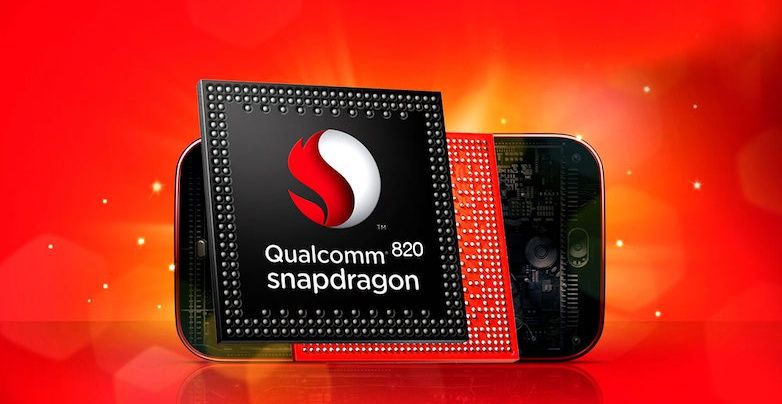
The LG G5 features the Snapdragon 820 under the hood, which has four Kryo cores clocked at 2.15GHz and an Adreno 530 taking care of the visuals. The phone has 4GB of RAM, 32GB storage, and a microSD card slot that can take in SD cards up to 256GB.
It’s safe to say that last year’s Snapdragon 810 — and to a lesser extent the Snapdragon 808 that powered the G4 — were thoroughly underwhelming in terms of performance and heat dissipation. But that’s all behind us now, as Qualcomm went back to the drawing board for the 820, leveraging ARM’s architecture license to build custom CPU cores dubbed Kryo. And the difference is immensely noticeable. The LG G5 absolutely flies with the Snapdragon 820, and there’s never a moment where you get the feeling that the phone cannot handle a particular task.
When it comes to storage, the G5 offers 32GB of internal memory, with 21.2GB available after the OS installation. There’s a microSD slot that can take in cards up to 256GB in size, and you’re going to need to throw an SD card in there if you intend to use the fabulous 4K video recording mode. Much like the Galaxy S7, LG decided to eschew Marshmallow’s Adoptable Storage feature, which lets you configure the SD card slot as an internal partition. The benefit in doing so is that the storage from the SD card becomes a part of the system, so if you have a 256GB SD card in the phone, the phone will treat the 240GB or so available storage from the SD card as internal storage. The downside of Adoptable Storage is that you cannot remove the said SD card, limiting its usage. Anyway, the issue is moot as the G5 does not have the feature enabled.
The IR blaster on the G4 was a nifty addition, and LG retains the feature on the G5. With the IR blaster and QuickRemote, you can control your AC, TV, AV gear, and more directly from your phone.
LG G5: Software
The LG G5 offers Android 6.0.1 Marshmallow out-of-the-box with features like granular permissions for apps, Google Now on Tap and Doze battery-saving mode. LG has been tweaking the user interface on its phones for the last three years, and the result is that LG UX 5.0 on the G5 is much more polished and pared down than anything I’ve seen on an LG phone to date, and a far sight better than the cartoony mess that was bundled with the G2. That said, LG — in its infinite wisdom — has decided that it would be a good idea to get rid of the app drawer, and while you can bring it back from the settings (it’s the Easy Home launcher), it is an unnecessary complication. The user interface is cleaner than earlier generations, but it’s immediately evident that a lot of work needs to be done in this area.
LG could have done more to modernize the look and feel of the UI in a few areas. For instance, while the color scheme throughout the UI is predominantly white interspersed with teal giving a distinct Material Design feel, the app drawer looks like something out of the KitKat era, and the system icons look outdated as well. Thankfully, it’s a sight far better-looking than the latest iteration of TouchWiz.
Overall, LG UX 5.0 takes some getting used to, but it offers a lot of options that aren’t available on vanilla Android.
What’s not so great is that for the second year in a row, LG isn’t offering a two-stage notification shade, instead bundling a few quick settings in the notification window. You have the option to customize and alter the layout of the quick toggles, but it would have been much better to go with the vanilla Android implementation. Overall, LG UX 5.0 takes some getting used to, and if you’re looking for additional customization, you can always do what I did and go with a third-party launcher like Nova and an icon pack.
While skins like LG UX and TouchWiz get a lot of flak for being bloated, they do offer a lot of options that aren’t available on vanilla Android. For instance, the Contacts and Dialer on the G5 are much more robust, allowing you to undertake a wider array of actions. Then, there are the little things. If you’re like me and want to set a custom tune as your ringtone, you can create one by choosing any locally-saved media. Even hitting the power button to shut down the phone gives you additional options, like the ability to turn on flight mode or restart. It’s only when you switch to a phone that doesn’t have these that you notice that the minor features make a difference.
LG G5: Camera & Image Quality

LG has made a name for itself when it comes to offering great cameras, and the trend continues with the G5. This time around, there are two cameras at the back, a traditional 16-megapixel (F1.8) shooter as well as an 8-megapixel wide-angle 135-degree camera with an F2.4 lens. There’s an option to toggle between the main camera and the wide-angle lens in the camera app, and you also have a host of settings and modes to shoot from, including time lapse, slow-motion, panorama, and more.

Auto mode is enabled by default, but LG has excellent manual controls, allowing you to tweak the color balance, ISO, and exposure settings among others. You also get a multi-view option, which uses all three cameras to shoot images and stitch them together into a single picture.
LG has shown for the second year running that it has what it takes to go up against Samsung’s and Apple’s flagships.

As for the images from the G5, LG has shown for the second year running that it has what it takes to go up against Samsung’s and Apple’s flagships. What about images in low light? Well, if you’re rocking out to a band in a club and want to take great images, you won’t find a better phone than the G5.
Also Read: LG G5 vs Samsung Galaxy S7 vs HTC 10: Camera Shootout
LG G5: Battery Life
The LG G4 was notorious for its battery life — partly due to the inefficient Snapdragon 808 — and I’m glad to say that this time around, things are much better with the G5. The shift to a 14nm manufacturing node with the Snapdragon 820 has worked wonders for the industry as a whole, and as a result you won’t see any overheating or drastic battery drain issues on the G5. That said, the 2800mAh battery on the phone does not last an entire day of heavy usage. I regularly saw a screen-on time of around two and a half hours over the course of a day, with usage including a few hours on browsing and the rest on social media.
Also Read: Samsung Galaxy S7 edge Review: Android flagship with an ‘edge’ over the iPhone
You’re going to be plugging this thing in to the wall outlet every night, and several times even before that.
Battery drain on 4G or when using GPS is horrendous, as the 2,800mAh battery wilts down in a matter of hours. You’re going to be plugging this thing in to the wall outlet every night, and several times even before that. The phone offers Qualcomm’s Quick Charge 3.0 tech, which makes thing slightly easier. The battery is a definite letdown, but at least you can get a quick top up in the middle of the day as QC 3.0 lets you go from 5% to 60% charge in just 30 minutes.
LG G5: Our Verdict

The LG G5 is launching at a time when flagships are starting to lose momentum to stellar mid-tier phones like the OnePlus 3. For Rs.27,999, the OnePlus 3 offers an experience comparable to that of the LG G5. In a few areas like the design and build quality, the Chinese manufacturer is ahead of what’s on offer with the G5. However, the differentiator with high-end phones from the likes of LG, Samsung, and HTC continues to be the overall experience. Sure, the OnePlus 3 has a serviceable screen and a very decent camera, but if you want the absolute best, you’re going to have to shell out the big bucks.
Also Read: HTC 10 Review: HTC makes its best flagship smartphone yet
It wasn’t hard to recommend the G4 last year. The phone had a brilliant screen, and a class-leading camera with a manual mode that was the best available on a phone. The same holds true for the LG G5, but with a few caveats: you’re still getting a phone with an incredible screen and an amazing camera, but this time around, the build quality isn’t at the same level as other phones in this segment, and you don’t get nearly as much for your money.
Overall, the LG G5 is a decent phone, but decent just doesn’t cut it in this segment anymore, particularly when other manufacturers are raising the bar.
The Galaxy S7 edge offers an excellent screen and a stunning camera, along with a microSD slot, wireless charging, as well as water and dust resistance. The latter may not seem like a lot right up until the moment your phone falls into a puddle. For the G5, it would mean a journey to the service center. If you’ve got the S7 edge, all you need to do is pick it up, dust it off, and you’re on your way. The S7 edge also has a more premium design, and significantly better battery life.
Also Read: OnePlus 3 Review: Finally, the flagship killer we all deserve
Then there’s the HTC 10, which is just about the most beautiful phone on sale today. HTC has worked with Google on the software front with Sense 8, making one of the best manufacturer skins available on Android even better. The design and the UI make the phone a great buy, and if you like listening to lossless audio, you’ll love the HTC 10 even more.
Overall, the LG G5 is a decent phone, but decent just doesn’t cut it in this segment anymore, particularly when other manufacturers are raising the bar.










